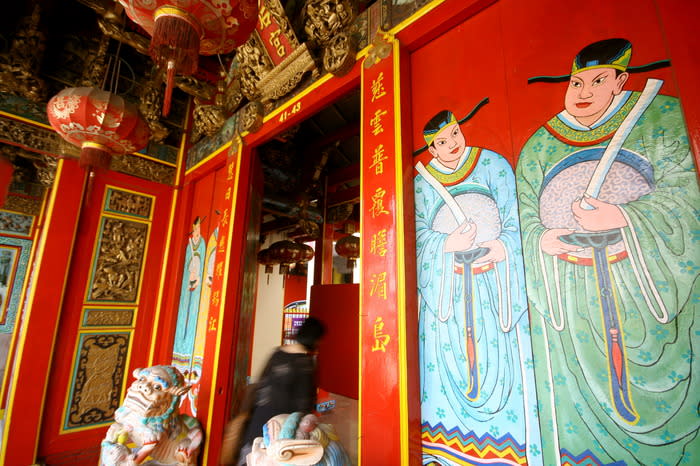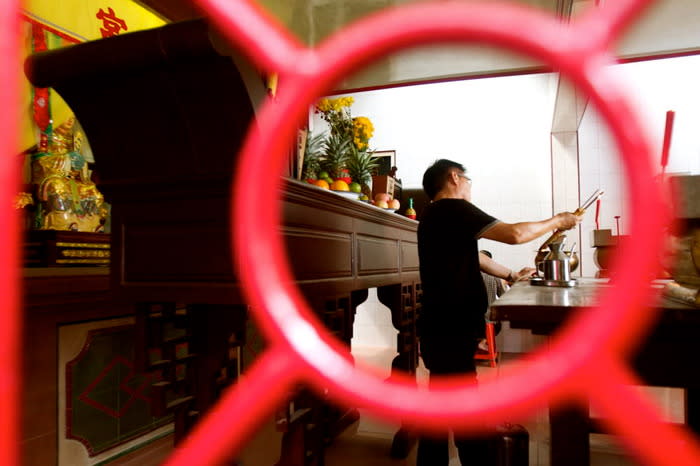Interview with Andrew Susanto: Embracing Peranakan culture
For centuries, Peranakan descendants have sewn their threads into the colorful tapestry that is Indonesian culture.
Head of the Association of Peranakan Tionghoa Indonesia (Aspertina) Andrew Susanto told The Jakarta Post Travel about how Peranakan culture originally came from Indonesia and how it eventually became a truly Indonesian identity.
I met Andrew amid the major deluge that besieged Jakarta earlier this month. He somehow managed to find a way out of his heavily inundated apartment in North Jakarta to meet me downtown.
The Tomohon, North Sulawesi- born entrepreneur was fairly easy to spot — he was wearing a bright coastal pattern batik often found in cities with considerable influence from the Peranakan culture such as Cirebon, Pekalongan and Lasem.
The evolution of the Peranakan community in Indonesia is evident throughout history.
The biggest Chinese migrant wave to Indonesia was in the 16th century, triggered by colonialism. Before that, the feared Kublai Khan had already entered Southeast Asia in the 12thcentury with his gangs of Mongols.
Since then, Chinese Indonesians spread throughout the country and settled side-by-side with other ethnicities.
A list of Jakarta’s Chinese New Year Treats
Today, the *Peranakan* culture in big cities like Medan, Semarang, and Pontianak are fused with other cultures. Its influence is expressed through various things, such as cuisine, art performances and historical buildings.
Nevertheless, the Chinese Indonesian community has not always had it good. Under the New Order regime —1967 to 1998 — many Chinese Indonesians were forced to downplay their ethnicity. This ended shortly after the regime’s downfall and nowadays Chinese Indonesians express their identity more freely.
Today, the community is growing bigger, and Peranakan is slowly becoming an identity that is distinctively Indonesian.
The Jakarta Post Travel (TJPT): What is the meaning of “Peranakan”?
Andrew Susanto (AS): Peranakan means a hybrid culture; it includes cultural influences from mainland China. Basically it could be paired with any other culture but *Peranakan* descendants in Indonesia are obviously born with genetic leverage from Indonesia. Although it sounds like an Indonesian word, the word is used to define cross culture descendants in other countries like Singapore, Thailand, Malaysia and Australia.
TJPT: What is the difference between the original culture from mainland China and Peranakan culture?
AS: Basically, the mixture between Chinese influence and locals produce a new kind of culture. The difference can be found in many aspects.
For instance, the Chinese usually use a dragon as their symbol of identity. For Peranakan, the mythological animal often used is the phoenix, the feminine side of Dragon.
While the color red is found in many festivals, Peranakan prefer pink and soft pastels.
In China, white represents grief. People usually associate white with tears and woe. In *Peranakan* culture, thanks to the Portuguese, Kebaya Encim (traditional female attire with a distinctively Chinese collar) is mostly white.
Another example can be found in our culinary world. The original lumpia (spring roll) is stuffed with pork but in Indonesia we use bamboo.
The famous Gambang Kromong (traditional music often associated with the Betawi people of Jakarta) uses Chinese and Javanese instruments. Not to mention Batik, Wayang Potehi (shadow puppet), Barongsai (lion dance) and many more. The acculturation is undeniable.
TJPT: Where did the Peranakan culture first spread?
AS: There is debate about where Peranakan culture was born. At the assembly of the Federation of Peranakan Association in 2011, delegations from Malaysia stated that Peranakan came from their country. However, delegations from Singapore said that the first Peranakan culture was born in Indonesia.
The thing is, in Malaysia, you cannot find buildings built before 1800, but in Indonesia, if you go to the north coast of Java, you could spot a line of Chinese influenced buildings built in 1600 and some even from the 1400s.
Another funny thing is, when all of us are invited to sing Peranakan songs, the songs that sang were: Bengawan Solo, Injit-injit Semut, Ayo Mama and Burung Kakatua. Totally the same title, melody and lyrics. So I am pretty sure that the Peranakan culture was born in Indonesia.
TJPT: What is the main mission of Aspertina?
AS: Aspertina is a cultural organization. Our mission is not political. In the New Order, cultural expression was prohibited for Chinese Indonesians. Most of the action happened in a domestic context. We were treated as minority.
In that era, Chinese Indonesian youths — including me — did not feel part of the country. Peranakans were outsiders. When the reformation era began, there was a change in the public’s perception of Chinese Indonesians. Aspertina’s main mission is to raise awareness of the community’s culture and how it has been intertwined with other cultures for centuries.
TJPT: How does Aspertina view that particular condition today?
AS: Today, things are much better. There is room for the Peranakan to grow and be treated equally with others. Peranakan heritage and art performances are embraced and upheld.
In 2009, the country inaugurated John Lie as Indonesia’s first Peranakan national hero. I believe that Indonesia’s diversity is the strongest value we have. So, embracing *Peranakan *culture is one true example of celebrating diversity.




